Examining The Differences Between Competition at the Paralympics and Olympics
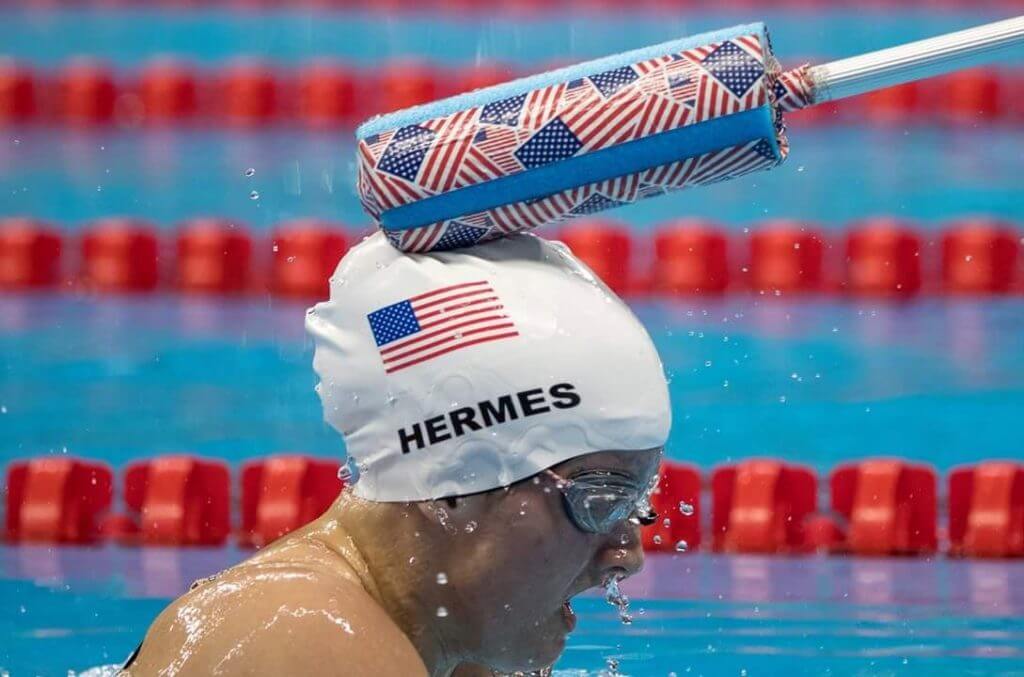
Examining The Differences Between Competition at the Paralympics and Olympics
Although the Olympic and Paralympic Games are parallel at their core, there are inherent differences between these pinnacle competitions. Here are some things you may notice on the Para pool deck compared to the Olympic pool deck.
Starts Look a Little Different
Strobes, water starts, and assists. Athletes with disabilities each have their unique way of entering the water. Several athletes use assists to help them onto the blocks and stabilize them for the start. Others start in the water with a coach or assistant holding onto their hands or feet so that they do not start early. Strobes are used for athletes with hearing impairments.
Assists Are Unable To Talk To Their Athletes Before a Paralympics Race
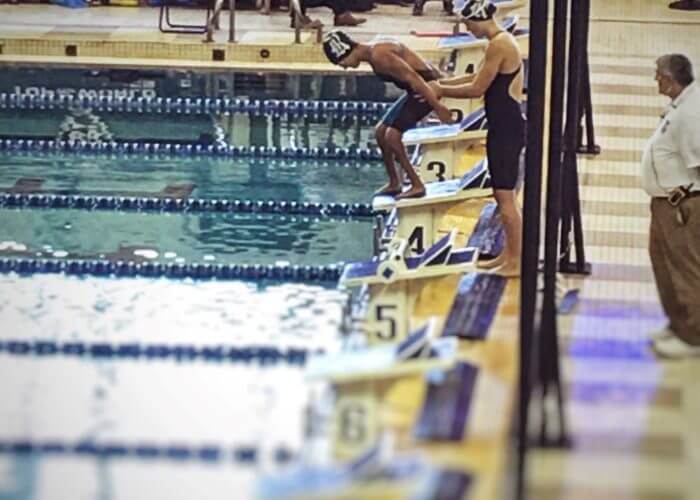
Photo Courtesy: Ahalya Lettenberger
Tappers, assistances, and coaches are unable to talk to their athletes in the call room or before a race. This is to prevent strategizing and planning before the race which could lead to an unfair advantage for athletes who have no assists in the call room.
Puppy Kisses Are Plentiful
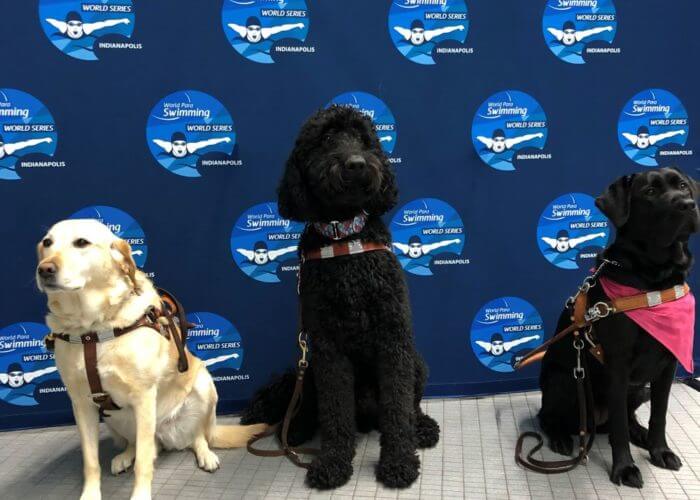
Photo Courtesy: McClain Hermes
Pool decks at Paralympic swim meets are not only populated by swimmers but also their service animals. If the service or guide dogs are off harness, they enjoy socializing and getting attention from the other swimmers while their person is swimming.
Body Parts Are Strewn All Over the Area; Mainly Titanium Ones
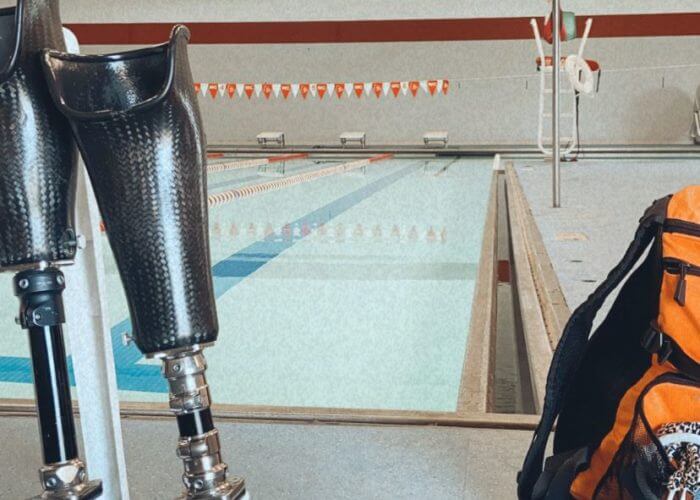
Photo Courtesy: Heaven Shepherd
Amputees leave their prosthetic limbs all over the pool deck. It is not uncommon to see legs leaning against chairs, bleachers or beside the pool deck. Not to mention the number of wheelchairs maneuvering back and forth from the blocks to the bleachers.
Olympic Rings Are Not Allowed
Due to branding rules and regulations, the Olympic Rings are not able to be shown at Paralympics events. Athletes with Olympic ring tattoos must cover their tattoos, or they will be disqualified. This also applies to clothing as well.
U.S. Paralympic Team Selection Is A Bit More Complicated
The U.S. Paralympic Swim Team selection procedures are very different from the Olympic team selection process. Event winners do not automatically make the Paralympic Team. Selection comes down to world rankings and an athlete’s proximity to the third-fastest time posted during the qualification period.
Swimmers Are Sometimes Hit On The Head By Their Coaches!
No, this is not some type of abuse, but the technique the blind and visually impaired swimmers rely on to know when they are nearing the wall. A tapper is used by the assistance or coach to touch the swimmer’s head to let the swimmer know that it is time to flip or finish.
Two-Handed Touches Are Not Always Required For Paralympics Swimmers
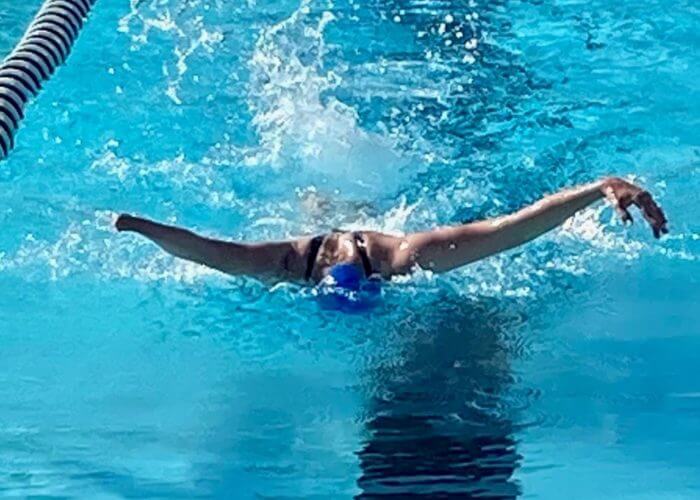
Photo Courtesy: Summer Schmit
Swimmers with limb length differences in their arms, missing a hand or who have a disability which limits the simultaneous movement in their arms are not required to have a two-hand touch for the butterfly and breaststroke.
The Event Lineup Is Modified
Due to 14 different classifications in Paralympic swimming to accommodate the varying levels of disabilities, the event lineup is modified. Spectators will not see the 200 butterfly, backstroke, or breaststroke, the 400 IM, the 800 or 1500 freestyles in any of the classifications at the Trials or the Paralympic Games. A generic event lineup could include 50/100/400 freestyle, 100 backstroke, 100 breaststroke, and 200 IM.
Some Swimmers’ Goggles Are Inspected After Each Race
For one specific classification, goggles must be inspected after each race. S11 swimmers, or swimmers who are completely blind, are required to wear totally blacked out goggles during a race. At the conclusion of the race, an official must inspect each swimmers’ goggles to make certain no light is visible through the goggles. If any amount of light is present, the swimmer is immediately disqualified.
Even though there are differences between Olympic and Paralympic competition, there is no difference between the hard work, dedication and sacrifices these swimmers make to accomplish their goals and dreams.
Congratulations to all of the athletes selected to represent Team USA at the Olympic and Paralympic Games in Tokyo, Japan. We are one team. We are TEAM USA!!!




.jpg)
Excellent! Well written and very informative! Thanks McClain.
My college hosted the blind nationals 3 of the first 4 years, plus hosted the blind Olympic team in 1980 for their training camp.
The great Trischa Zorn was 17 yrs. old then, and going to her first Olympics. It was the beginning of a career of winning Olympic (mostly) gold medals and world records. That year, she was a h.s. All-American and qualified for the sighted Olympic Trials.
McClain, thank you for this brilliant article and thank you for the clarification on each item! Go team USA and go McClain.
I rather enjoyed being educated on this. I love watching summer n Winter Olympics. I do have to admit, I have never watched Paralympics but I look forward to them as much! Good luck and go for the Gold Team USA!!
If the swimmer is completely blind, what is the reason for checking the goggles?
It’s a much quicker mode of verification than having an ophthalmologists check his or her eyesight.
Because “completely blind” doesn’t mean 100 % lack of any kind of visual experience but rather 100 % lack of so-called functional vision. Many completely blind are able to at least at times to perceive light or something similar. Not really useful, but to make the playing, or in this case, swimming field even, all wear blacked out goggles. Or this is my understanding of things. I’m functionally blind meaning in my case that in familiar places in suitable lighting (in my case semi-dark) I’m able to partially see. But in unfamiliar places in good lighting i’m as good as no eyes at all.Raisa.ticklen@gmail.com
why olimpics rings are not allowed??? thanks
olympic rings are not allowed cuz they offend olympics like your making fun of them.